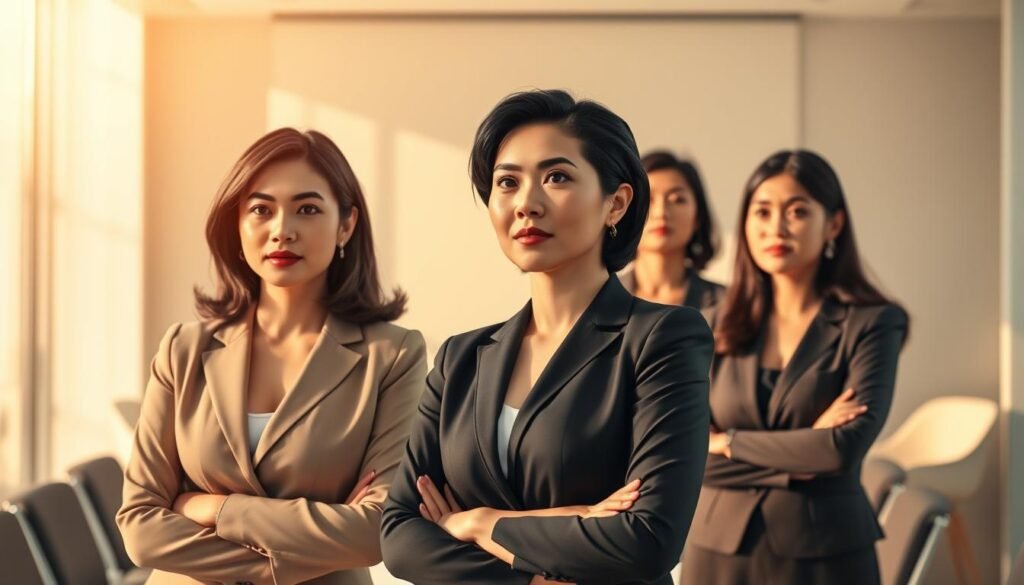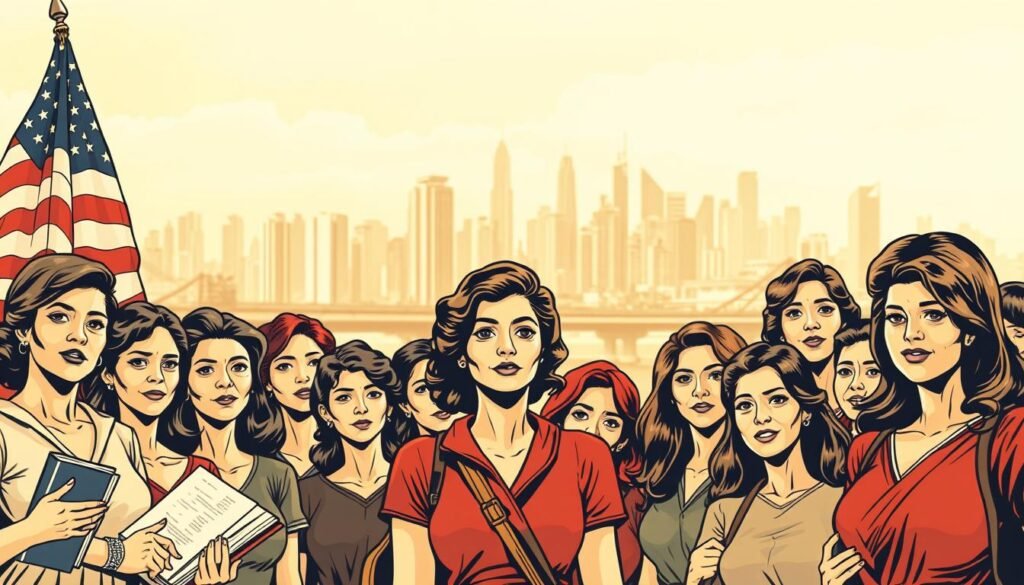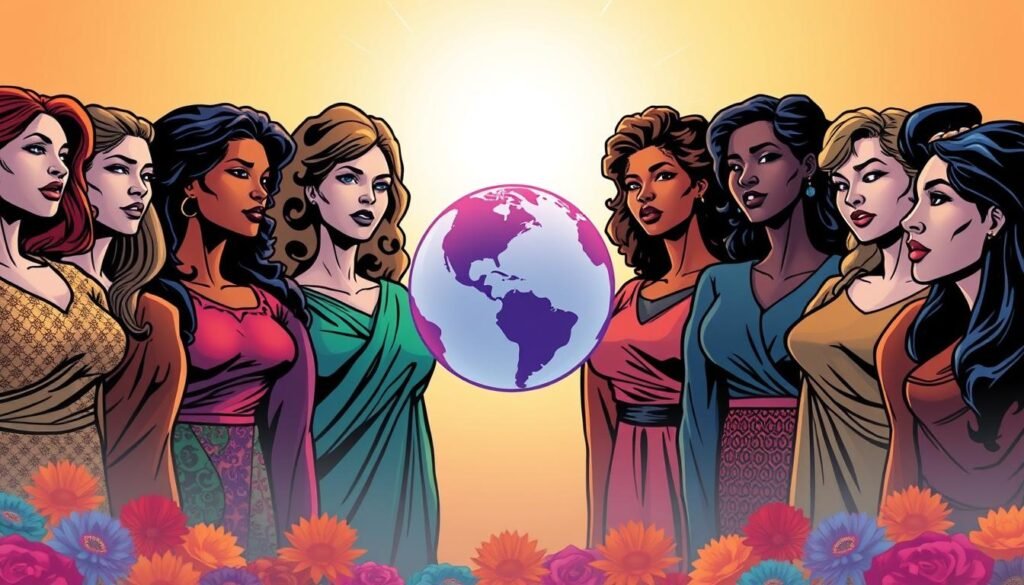The American era marked a significant turning point in the history of the Philippines, particularly in reshaping the roles of Filipino women. During this period, traditional gender norms began to shift, paving the way for greater equality and opportunities in professional fields. Colonial influences introduced new systems and ideas that challenged long-standing societal structures.
Filipino women began to break barriers, entering industries such as law, science, and commerce. Their adaptability and resilience allowed them to take on leadership roles, contributing to the nation’s development. This transformation was not just about economic participation but also about redefining their place in society.
This article explores how education, legal reforms, and cultural shifts during the American era empowered Filipino women. It highlights their achievements and the challenges they overcame, setting the foundation for today’s movements toward gender equality.
Key Takeaways
- The American era reshaped traditional roles for Filipino women.
- Colonial influences opened doors to new professional opportunities.
- Women entered fields like law, science, and commerce.
- Leadership roles became more accessible during this period.
- This transformation laid the groundwork for modern gender equality movements.
Historical Context of the American Era and Gender Roles in the Philippines
The American colonization of the Philippines brought profound changes to societal norms and gender roles. Colonial rule introduced new political and social systems that challenged traditional structures. This period marked the beginning of a shift toward greater equality and access to opportunities for Filipino women.

Colonial Influences and Early Social Structures
American colonizers brought with them ideas that redefined traditional roles. Early social structures in the Philippines were deeply rooted in familial and community-based systems. These structures often limited women to domestic roles, but colonial influences began to open doors to new possibilities.
For example, American missionaries and teachers played a key role in introducing education and healthcare systems. These changes provided women with access to resources that were previously unavailable. This shift laid the groundwork for future development in professional and leadership roles.
Transition from Traditional to Modern Roles
The transition from traditional to modern roles was gradual but significant. Women began to enter fields such as education, healthcare, and commerce. This change was supported by legal reforms and evolving societal attitudes.
Historical events, such as the granting of suffrage in 1937, marked a turning point. Women gained the right to vote, further empowering them to participate in governance and advocacy. These milestones highlight the resilience and adaptability of Filipino women during this transformative period.
Filipino Women’s Journey in Education and Professional Development
Educational reforms during the American period became a cornerstone for Filipino women’s progress. Increased access to schools and literacy programs opened doors to new career opportunities. By the 1920s, women made up nearly 40% of the student population in normal schools, which trained teachers.

Higher education and professional training became more accessible. By 1939, women accounted for 35% of the workforce, a significant rise from 25% in 1903. Fields like medicine, law, and engineering saw groundbreaking contributions from Filipino women.
Access to Education and Career Opportunities
The American era introduced public education systems that benefited women. Literacy rates in urban areas reached over 80% by the 1930s. This shift allowed women to pursue careers beyond traditional roles.
Key milestones included the rise of women in nursing, where they constituted 60% of the workforce by the late 1940s. Legal reforms also played a role, enabling women to enter professions like law and governance.
Key Contributions Across Various Sectors
Filipino women made significant strides in multiple fields. In healthcare, they became leaders in nursing and public health. In education, they inspired future generations as teachers and administrators.
“The progress of Filipino women during this era laid the foundation for modern gender equality movements.”
Their contributions extended to law and engineering, where they challenged stereotypes and paved the way for future leaders. This transformation was not just about individual success but also about societal change.
For more insights into this transformative period, explore how colonial policies shaped Philippine progress.
Women in Leadership: Breaking Barriers and Shaping the Future
The American era opened doors for Filipino women to step into leadership roles, reshaping societal expectations. This period marked a turning point, as women began to challenge traditional norms and take on positions of influence in politics and industry.

Early Trailblazers in Politics and Industry
During this era, several Filipino women emerged as pioneers. They faced significant challenges, including societal resistance and limited resources. Despite these obstacles, they paved the way for future generations.
One notable figure was Gerona vda. de Katigbak, the first woman elected to the Philippine Assembly. Her leadership inspired many, proving that women could excel in governance. In industry, women like Maria Y. Orosa made groundbreaking contributions, particularly in food innovation and public health.
Impact on Economic Empowerment and Policy Reform
The achievements of these leaders had a profound impact on economic empowerment. Their efforts led to policy reforms that promoted gender equality and expanded opportunities for women in the workforce.
For example, the introduction of labor laws ensured fair wages and working conditions. These changes not only benefited women but also contributed to the nation’s overall development.
| Name | Field | Key Achievement |
|---|---|---|
| Gerona vda. de Katigbak | Politics | First woman elected to the Philippine Assembly |
| Maria Y. Orosa | Industry | Pioneered food innovation and public health initiatives |
| Trinidad Fernandez | Education | Advocated for women’s access to higher education |
These trailblazers not only broke barriers but also inspired a new generation of leaders. Their legacy continues to shape the fight for equality and justice in the Philippines.
Influence of American Policies on Gender Equality and Rights
American colonial policies in the Philippines played a pivotal role in reshaping gender rights and equality. During this period, legal reforms and advocacy campaigns began to challenge traditional norms, paving the way for greater access to education, employment, and political participation.

Legal Reforms and Legislative Changes
The American era introduced significant legislative changes that advanced women’s rights. One of the most notable milestones was the granting of suffrage in 1937, which empowered women to participate in governance. This reform marked a turning point in the fight for equality and social justice.
Other reforms included the right to education and employment, which allowed women to enter professions like law, medicine, and engineering. These changes not only improved individual lives but also contributed to the nation’s development.
Advocacy and Campaigns for Gender Equality
Advocacy played a crucial role in driving legislative reforms. Organizations like UN Women and Amnesty International highlighted the importance of gender equality through global campaigns. These efforts inspired local movements in the Philippines, leading to policy changes that protected women’s rights.
“The progress of women’s rights during this era laid the foundation for modern equality movements.”
Campaigns focused on issues like education, healthcare, and violence against women. These initiatives not only raised awareness but also created a platform for women to voice their concerns and demand change.
For more insights into the ongoing fight for equality, explore why women’s rights remain vulnerable in and how perceptions of gender equality have.
Cultural Shifts: Redefining Womanhood and Social Change
Cultural transformations during the American era redefined the essence of womanhood in the Philippines, sparking a wave of social change. Traditional roles were challenged, and new ideas about gender and identity began to take root. This period marked a turning point in how society viewed women and their contributions.

Evolving Perceptions of Feminism and Identity
Feminist thought in the Philippines evolved from traditional views to modern perspectives. Early ideas focused on basic rights, such as education and suffrage. Over time, these expanded to include broader issues like equality in the workplace and leadership roles.
Societal expectations also shifted. Women were no longer confined to domestic roles. They began to pursue careers in fields like law, medicine, and engineering. This change was driven by both internal cultural narratives and external influences.
“The progress of women’s rights during this era laid the foundation for modern equality movements.”
Internal cultural narratives played a key role in reshaping public perceptions. Stories of pioneering women inspired others to challenge stereotypes. These narratives highlighted the resilience and adaptability of Filipino women.
Impact on Personal Identity and Social Change
The cultural shifts of this era influenced both personal identity and collective social change. Women began to see themselves as more than just caregivers. They embraced roles as leaders, innovators, and advocates.
This transformation was not without challenges. Many faced resistance from traditionalists. However, their perseverance paved the way for future generations. Today, these cultural shifts continue to inspire movements for gender equality.
| Key Aspect | Impact |
|---|---|
| Feminist Thought | Shifted from basic rights to broader equality |
| Societal Expectations | Expanded roles for women in various fields |
| Cultural Narratives | Highlighted resilience and adaptability |
For more on how cultural shifts have influenced gender roles, explore the 1920s cultural transformation in the United States.
Global Perspectives: International Advocacy and Recognition
Global advocacy efforts have significantly shaped the fight for gender equality and women’s rights worldwide. Organizations like UN Women have led campaigns that address critical issues such as violence against women and access to education. These initiatives have gained international recognition, inspiring change across diverse cultures.

UN Women Initiatives and Global Campaigns
UN Women has been at the forefront of promoting gender equality since its establishment in 2010. Through policy advocacy, the organization has influenced legislative changes in over 116 countries. Key initiatives include the elimination of discriminatory laws and the alignment of national policies with global frameworks.
One notable success is the agreed conclusions of the Commission on the Status of Women (CSW) 63. This milestone highlights the importance of international collaboration in advancing women’s rights. “The progress of women’s rights during this era laid the foundation for modern equality movements.”
Cross-Cultural Comparisons of Gender Rights
Cross-cultural comparisons reveal both progress and challenges in achieving gender equality. For example, countries like Viet Nam and Mexico have made significant strides in policy reforms. However, regions like Burundi and Georgia still face hurdles in implementing these changes.
Global campaigns, such as the “16 Days of Activism Against Gender Violence,” have raised awareness about domestic violence. These efforts emphasize the need for joint action to address disparities and promote women’s participation in all aspects of life.
- Examine global efforts and campaigns that champion gender equality and the rights of women.
- Highlight key initiatives by UN Women and other international organizations that have gained worldwide recognition.
- Compare the progress and challenges of gender rights in the Philippines with those in other countries.
For more insights into the ongoing fight for gender equality, explore how global initiatives are shaping the.
Conclusion
The transformative journey of Filipino women during the American era laid the foundation for modern gender equality movements. From breaking into education and professional fields to stepping into leadership roles, their resilience reshaped societal norms. Legal reforms and cultural shifts further empowered them, setting the stage for ongoing progress.
Today, the legacy of these pioneers continues to inspire. International advocacy and local efforts work hand in hand to address challenges like violence and limited access to resources. The fight for equality remains a global priority, with organizations like UN Women leading impactful campaigns.
As we reflect on this journey, it’s clear that sustained advocacy and reform are essential. The progress made so far highlights the importance of continued support for women’s rights and empowerment. For deeper insights, explore how global frameworks shape gender equality.
FAQ
How did the American era influence gender roles in the Philippines?
The American era introduced new social structures and policies that shifted traditional gender roles, providing greater access to education and professional opportunities for Filipino women.
What were the key contributions of Filipino women during this period?
Filipino women made significant strides in education, healthcare, politics, and industry, becoming trailblazers in their respective fields and contributing to societal progress.
How did American policies impact gender equality in the Philippines?
American policies brought legal reforms and legislative changes that promoted gender equality, empowering women to advocate for their rights and participate in public life.
Who were some early Filipino women leaders during the American era?
Early leaders included figures like Pura Villanueva Kalaw and Sofia Reyes de Veyra, who broke barriers in politics, education, and social reform, paving the way for future generations.
How did cultural perceptions of womanhood evolve during this time?
Cultural perceptions shifted as women embraced modern roles, challenging traditional norms and redefining their identities through education, work, and activism.
What role did international advocacy play in advancing gender rights in the Philippines?
International campaigns, such as those led by UN Women, provided support and recognition for Filipino women’s efforts, fostering cross-cultural collaboration in the fight for gender equality.
Source Links
- Women in the Philippines
- National Historical Commission of the Phillippines
- American Women in the Philippines · The Philippines and the University of Michigan, 1870-1935 · Philippines
- Empowering Filipino Women for Sustainable Development: A Collaborative Effort
- National Women’s Month | Philippine Commission on Women
- Women in Leadership: Breaking Barriers and Shaping the Future
- Women in Leadership: Breaking Barriers and Shaping the Future – edWeb
- Progress toward gender equality in the United States has slowed or stalled
- Women and Gender in Public Policy
- Redefining Womanhoods (Chapter 3) – Gender and Sexuality in Modern Japan
- Frontiers | Women as Agents of Change: Exploring Women Leaders’ Resistance and Shaping of Gender Ideologies in Pakistan
- Microsoft Word – womens rights as humna rights.doc
- Conclusion: Promoting Development By Women, For Women

